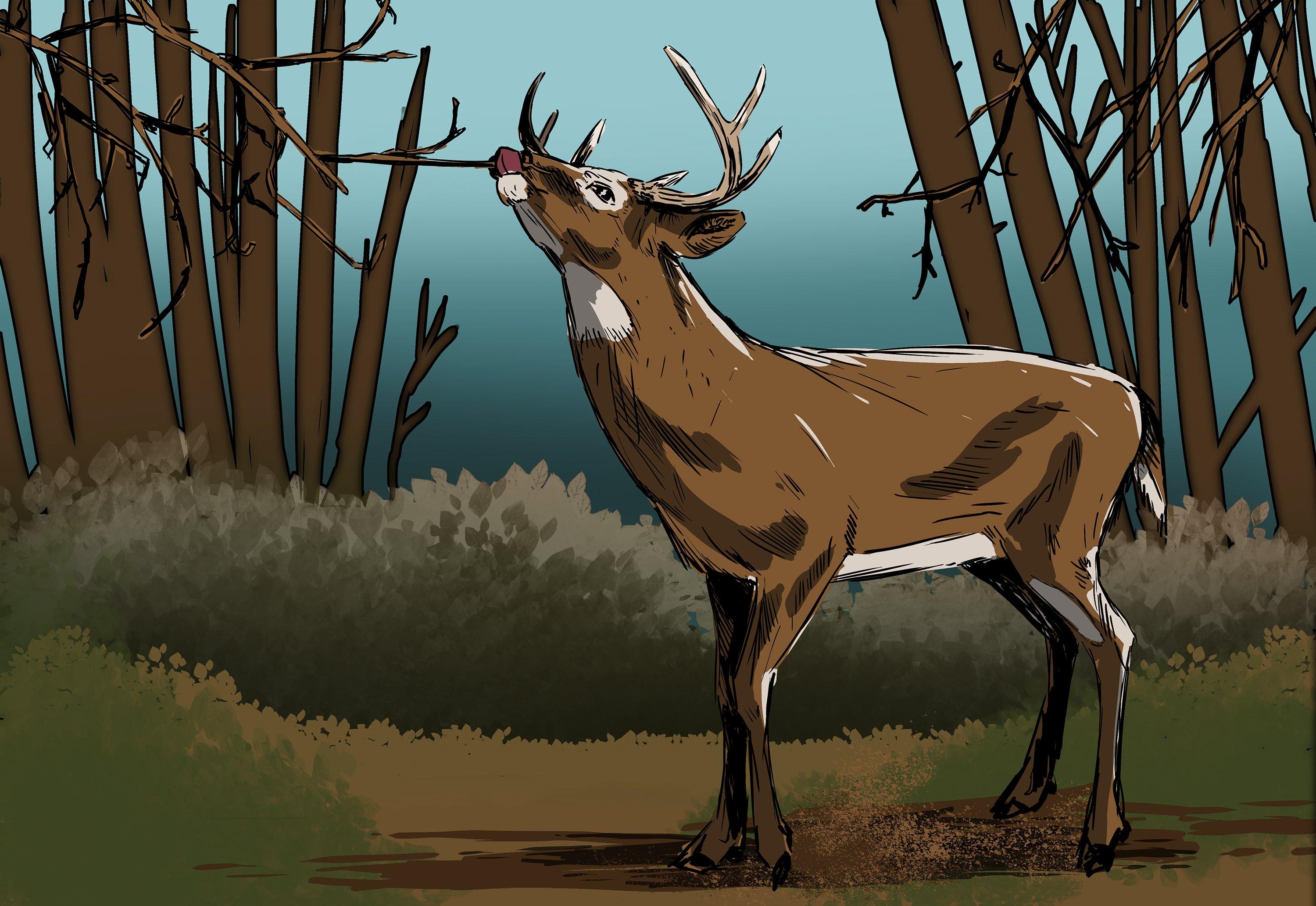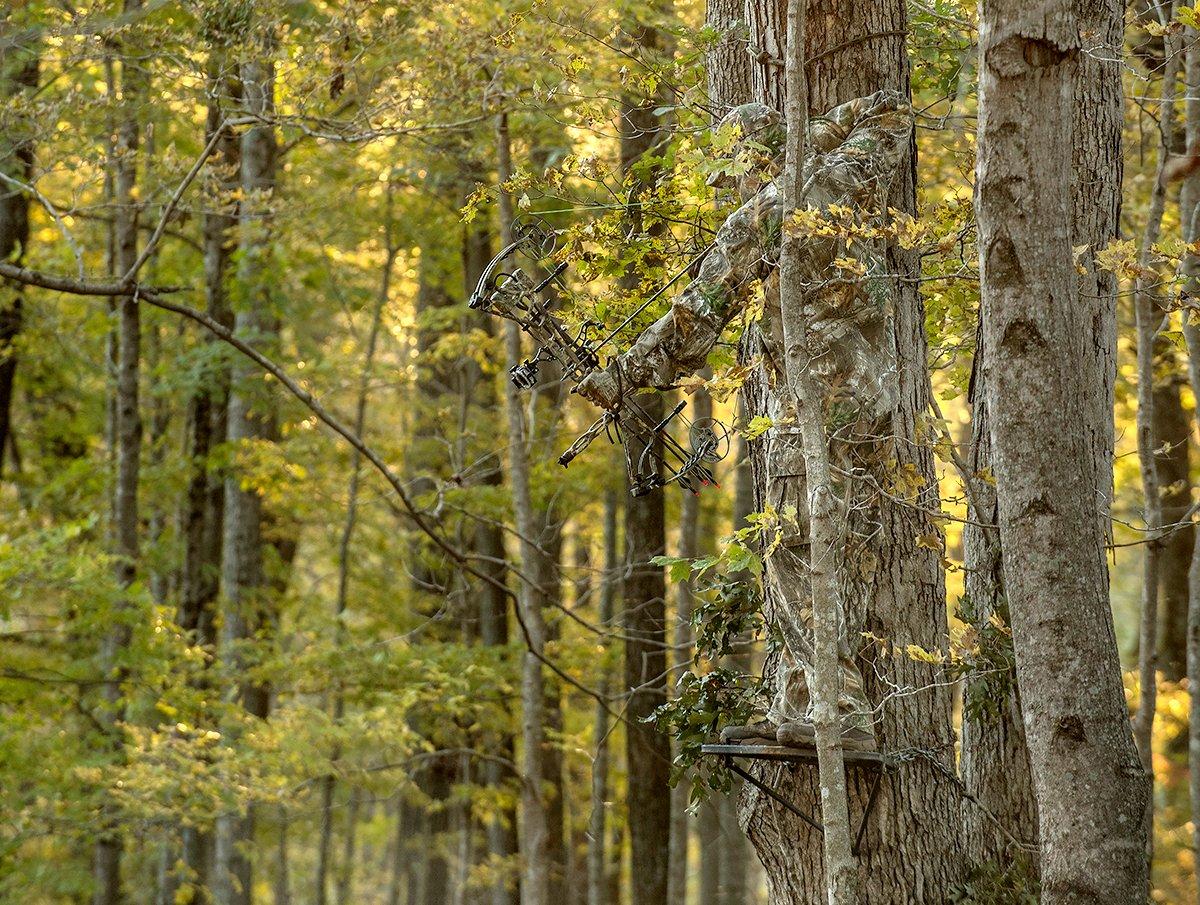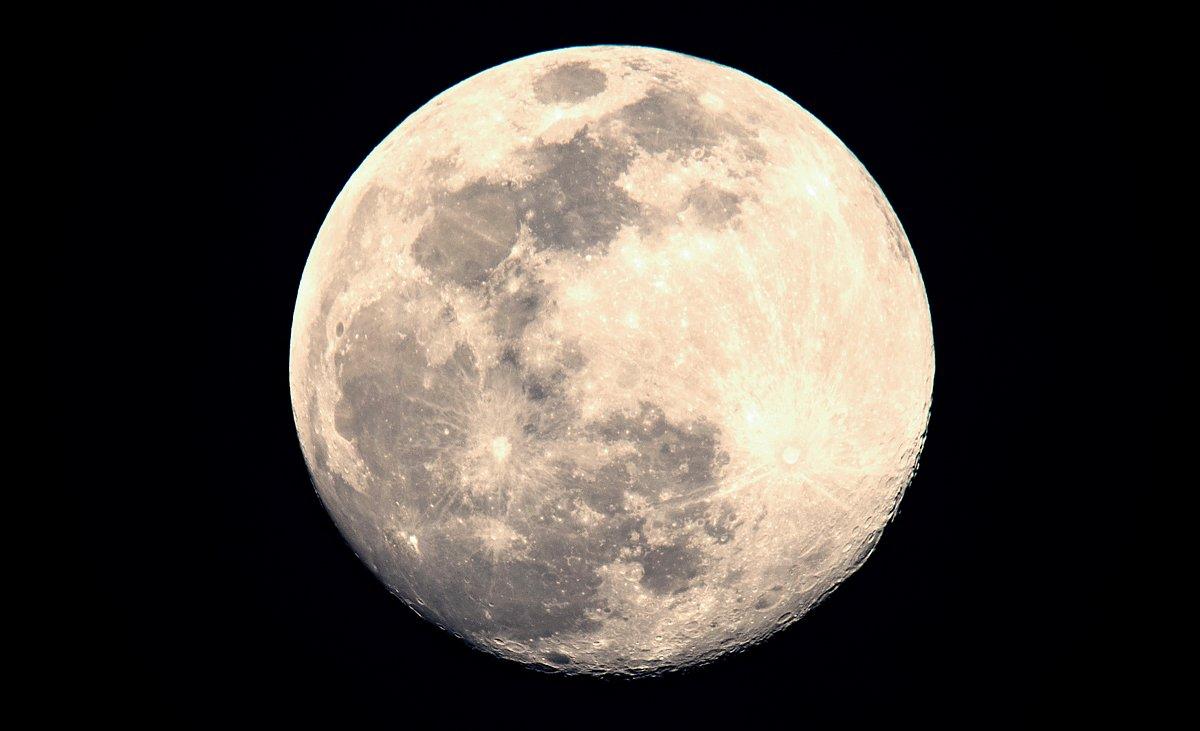A fresh spin on some long-standing whitetail misconceptions
A talking head on outdoor TV puffs his chest and declares, Man, the full moon is the worst time to hunt! Sounds pretty good, and you buy it. Your daddy told you never to overhunt a spot, and you never doubt Pops. Stands to reason that if another hunter tromps too close to your treestand, your day is ruined, right?
Uh, no, to all three of the above. Let's change your thinking on some misguided beliefs about big deer and how to hunt them.
(Don't Miss: Pennsylvania Record Buck Hid in Garage for 60 Years)
Big bucks always move at dawn and dusk.
Whitetail deer are crepuscular animals, so yes, bucks move most often at dawn and dusk.
But not always.
A few years ago in Canada, I shot one of my best bucks ever, a 300-pound giant with a 183-inch rack, at 3 p.m. A good 75 minutes before dark one December day in Iowa, I slugged a 165-inch buck in a strip of standing soybeans.
It's not just me. Hunters from all over the country are killing 160- to 190-inch deer during the off hours of 9 a.m. to 3 p.m.
If you have always hunted the first two hours and the last two hours of daylight, you should put in more stand time. One old saying is still true: You can't shoot a buck back at camp. Stay on post later in the mornings, until 11. Go in early in the afternoons and get settled by 2 p.m., latest.
The cooler the weather the better, so definitely maximize your time on stand on chilly days during the season. Deer linger longer around food sources and in nearby funnels in the mornings, and they'll often move earlier in the afternoons. And this goes without saying: During the first 15 days of November, stay out all day — you might kill a giant anytime.
Never, ever, overhunt your best stand.
One day years ago, way before his Bone Collector days, Michael Waddell dragged a P&Y 8-pointer into our camp on Montana's Milk River and announced with his customary flair, The alfalfa stand is hot, y'all!
The next afternoon I climbed into the same lock-on in the cottonwood tree and drilled a 135-inch 9-pointer.
When whitetails are still on summer patterns and locked into a bed-to-feed routine in early bow season, don't hesitate to hunt your best stand two, three, or maybe even four days in a row as long as a favorable wind holds. Though more unpredictable, this can also work when it's cold and snowy in December, and run-down bucks are drawn to one of the last best food sources.
If and when you hunt a stand for multiple days, be as quick, quiet, and scent-free as you can on the walk in and out. The less intrusive you are, the better your chances of striking before the deer patterns change and the spot goes cold.
If some guy tromps close to your stand, that spot is ruined for the day.
One November morning Indiana hunter Chris Thomas went to his ladder stand and got a shock — some slime bag had ripped it off! Chris was royally bummed and didn't know what to do. He plopped down beside the tree to think, and just after sunrise a gang of pumpkin-colored hunters marched by on a deer drive. What the heck else could go wrong?
Chris had nothing better to do, so he sat tight. Two hours later he looked up bug-eyed as a huge buck raced down the ridge with some does. He aimed his shotgun, and the buck tumbled over. Chris' tenacity rewarded him with a 198-inch non-typical giant.
It clearly happens on public ground and can occur on private land. When another hunter walks under your treestand, or roars by your blind on an ATV, you're naturally going to think he spooked every deer within a mile. You'll get mad and flustered and want to move to a new spot or go home.
(Don't Miss: When is it OK to Hunt a Property Line?)
Don't. As long as the intruder hikes or drives on and gets gone in a hurry, sit tight. A buck might have been 150 yards away, standing stock-still and hidden in thick cover until the intruder passed. Or a 10-pointer might have been a half-mile away and was never aware of the guy's disturbance. Either way, a shooter buck might stroll into sight 20 minutes or three hours later and turn a miserable start into an epic hunt.
Stay out of your best spots until the wind and rut conditions are just right, then move in and hunt a buck.
Generally, that's not a bad way to think. But if there's one thing I've learned over the past 30 years it is that sometimes you gotta say to heck with it and hunt your target buck right now, especially on public land. If you don't risk it, another person will move in and hunt your deer. Or a food source will change from clover to acorns, or a doe three-quarters of a mile away will come into heat and pull all the deer over there. While you sit home and wait for the right wind and the stars to align, your buck leaves the area or somebody else spooks or kills him.
Be smart, but don't be afraid to spray down with scent-killer and hunt a buck on an iffy wind every once in a while.
The more acres you hunt, the better your chances.
Dieter Herbert is a 27-year-old New York City carpenter who bowhunts the suburbs near his home on Long Island. Most of the tracts that Dieter hunts are 20 acres tops — big enough to hide a big deer, and small enough for one man to scout and hunt effectively.
In November 2019 a huge buck with a split G-4 popped up on one of his trail cameras. Dieter scouted and tracked the beast for a year, and on Halloween of 2020 he shot him. The giant net-scored 197 4/8, the new state-record typical bow kill.
It's human nature to think that the bigger the farm or woods you hunt, the better your chances of killing big deer. No, just the opposite in many cases.
When you hunt a public area or a private farm or wood of 200 to 2,000 acres, you'll have to share the land with a few to an army of other hunters. People will roam and drive all over the place and hang treestands. To a mature buck, pressure changes everything, and it takes only a few days of that fracas for him to deep-dive for cover and go nocturnal.
Think about those small and likely unhunted woodlots and thickets near home that you drive past every day. If you can get sole permission to hunt 10 to 40 acres in just the right spot, you'll be able to scout it and hunt it the way you want to, like Dieter Herbert does in the New York suburbs. I doubt you'll shoot the next state record, but putting an arrow into a 130- to 150-inch buck is very doable.
(Don't Miss: The Science of Killing Big Bucks)
A full moon is the worst time to hunt.
Old-timers have preached it for years: Them deer can see so good in the big moon, they stay up all night eating and don't move a-tall in the day. It's bewildering to me that millions of hunters still think that way.
Numerous studies of whitetails have established historical rut curves that document one indisputable fact: In any year, from Virginia to Kansas to Canada, 90% of adult does will come into estrus and be bred from Nov. 5 to Nov. 20, regardless of moon phase.
I get that and I don't contend that the full moon determines the timing of the rut. But based on 30 years of observing and hunting whitetails for a living across North America, I do believe — no, I know — that the five or six days during and around the rutting moon in November can be a great time to hunt.
In a study conducted a few years ago at North Carolina State, researchers tracked GPS-collared deer throughout the four moon phases and analyzed text messages sent from the collars to determine when and how the animals moved. Summing up their findings, a scientist said, A common misconception is that deer can see better at night because it's brighter when the moon is full. But according to our data they actually move less on average at night during a full moon and more during the middle of the day, and also earlier in the evenings.
Bingo. Over the last three decades I cannot tell you how many mature bucks I have seen on their feet from 11 a.m. to 3 p.m. during full-moon days in November. I add that early-morning deer movement has been light to nonexistent on these days.
The full moon this November is the 19th. I predict you might catch a good buck prowling for or chasing does any day from the 15th through the 21st if you time your hunts right. Early mornings will be tough; spend as much time in a stand as you can from midmorning until dark.
(Don't Miss: 25 Tips for New Deer Hunters)
Hang your bow stand at least 25 to 30 feet high.
Granted, at 25 feet or higher a buck will not see or smell you. But if you're like me and most other people who are a little to very leery of heights, admit it, you're uncomfortable climbing and posting that high on a small platform. Standing and drawing your bow is awkward to nerve-wracking. Plus, the higher you hunt, the narrower the target of a deer's lung vitals, and the tougher the shot.
After hanging and hunting from too many treestands to count over the years, I firmly believe that anywhere from 17 to 21 feet is the perfect height for a stand. High enough so that if you play the wind right, sit still and make all the right moves, a buck won't bust you. Low enough that the stand feels solid, safe, and comfortable under your boots. When a buck comes in broadside within 40 yards, you have a killer sight picture and shooting angle to his vitals.
Miss a buck and it's all over.
Hmm, not always. Sail an arrow over a deer's back and it will flinch, jump, and run off a little way. But if the animal didn't see or smell you, it didn't know what happened. Maybe a stick cracked or a limb fell; deer hear those sounds all the time.
There are many stories of bowhunters missing a buck, only to have the animal settle down and circle back within range, only to get missed again or killed this time. Keep your wits, watch the jittery buck you just missed, and be ready. It's a long shot, but a second shot can happen.
(Don't Miss: You Wounded a Buck. Will He Come Back?)
Okay, but what about a booming rifle miss?
One day I fired my .270 and sailed a 150-grain bullet over the back of a 150-inch whitetail standing about 150 yards away on the Wyoming plains. The buck got confused, looked around, and took off like a shot — straight at me! I dropped him at 70 yards and was happy, even though my shooting sucked.
Don't get flustered and give up after a miss. Keep your wits, watch the buck, and be ready to atone.
If a buck stamps and head bobs, he's fixing to blow out of there — shoot!
A doe or buck stamps its foot and head bobs when it sees a strange object it can't make out, like you huddled on the ground or up in a treestand. It is nervous body language, yes, but it does not necessarily indicate quick flight. No need to take a quick and poor bow shot at a buck on high alert; he'll duck the arrow and whirl for sure.
Instead, freeze and don't move a muscle. Don't make direct eye contact with a stamping, bobbing deer if it is super close (sounds strange, I know, but try it). More times than not, so long as a buck doesn't smell you, it will settle down, lose interest, and start to walk off. Now you might have a better and easier shot at a calm deer.
(Don't Miss: 20 Deer Hunting Lies Your Granddaddy Told You)
Hunt a buck on his scrape line between feed and bed.
I cannot honestly say I have ever shot a buck on his scrape line. I might have, I just don't know. I'm not even sure scrape lines exist. The more I hunt whitetails in different terrains across the country, the more I believe that scraping is more random and scattered than on some particular line of travel.
I don't scout for scrape lines anymore. From Halloween through Nov. 15 or so, I look for a ridge, draw, or creek bottom pocked with a dozen or so dark, stinky scrapes, along with shiny rubs. I set a stand or blind and sit there a few days. If I don't spot much, I scout for new scrapes close by.
(Here's a bowhunting story from a red-hot ridge covered in scrapes!)
In a study on the rut behavior of wild, hunted bucks, University of Georgia researchers found that while some scrapes go cold overnight, multiple bucks might eagerly paw new scrapes only 100 to 200 yards away. That goes to my theory that scraping is random, a sign of bucks checking various areas for does while venting pent-up sexual energy.
Stay flexible and mobile, on the lookout for the next cluster of fresh scrapes. Your odds are much better this way, rather than trying to hunt a buck on a line of scrapes that may or may not exist.










